Types of Worms in Potted Plants
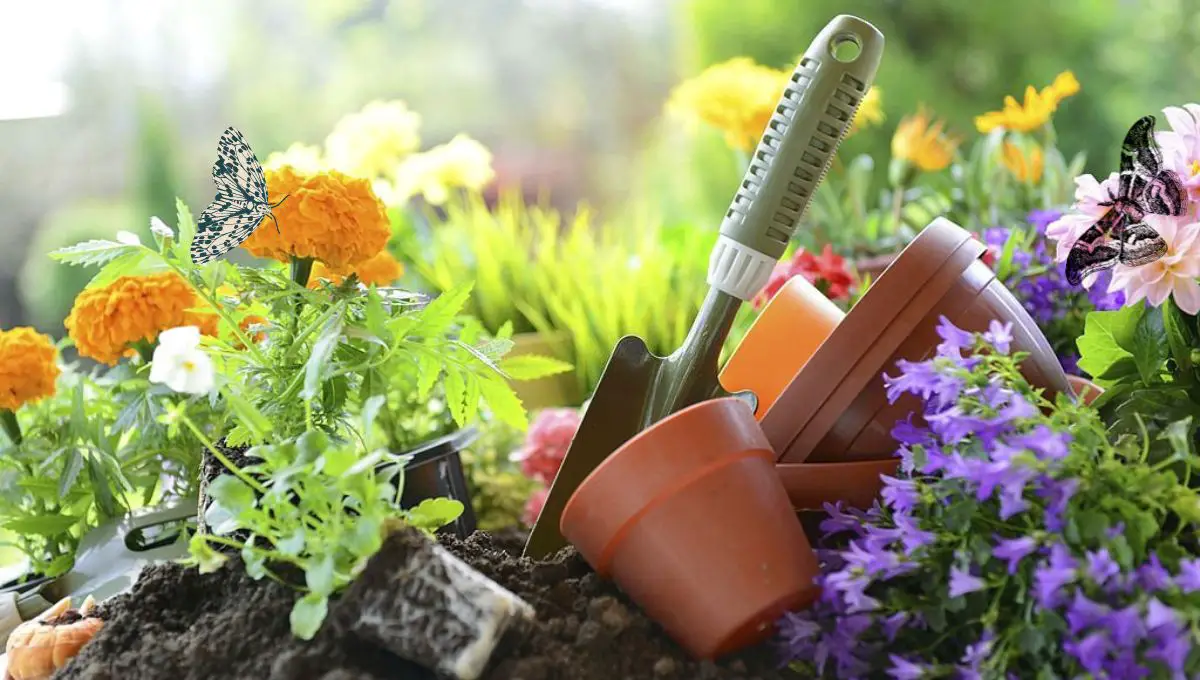
There are different types of gardening techniques like, Container Gardening, Vertical Gardening, Indoor Gardening, Water Gardening, Permaculture Gardening and many more.
However, the Pot Planting Technique is quite familiar nowadays which combines the versatility of container gardening with the convenience of indoor gardening. It involves growing plants in pots indoors and outdoors (like, backyards or rooftop etc.) and creating a seamless fusion of greenery and beauty within the living space and surroundings.
In the enchanting world of potted plants, an unseen universe thrives beneath the surface – a universe teeming with a variety of worms.
Yes, you read that right – Worms in Potted Plants!
In this article we are going to learn about different types of worms in potted plants and try to find out whether they are beneficial or harmful for your charming inhouse garden plants.
Types of Worms in Potted Plants
There are over 6000 species of worms that naturally occur on this planet. However, not every worm is productive for garden and potted plants. In fact, some worms have negative or no effect on plants’ health. Based on their biological effect on plants, worms are categorized into three types:
- Good Worms (these worms are naturally beneficial for plants and soil health)
- Neutral Worms (they neither benefit nor harm plants)
- Potentially Harmful Worms (these worms are potentially dangerous for plants and soil health)
| Good Worms | Neutral Worms | Potentially Harmful Worms |
|---|---|---|
| Earthworms (Lumbricus terrestris) | Pot Worms (Enchytraeidae family) | Grub Worms (Phyllophaga) |
| Composting Worms (Eisenia fetida, Eisenia andrei) | White Worms (Enchytraeus albidus) | Cutworms and Caterpillars |
| Red Wrigglers (Eisenia fetida) | Millipedes | Leaf miners |
| Nematodes (as a pest control) |
Earthworms: Friend of Your Container Plant
Introducing earthworms to your potted plants is biologically okay. However, make sure to keep the population of worms in control.
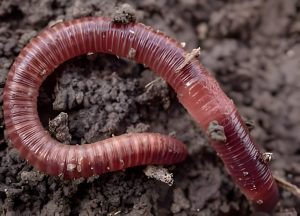
Earthworms, lobworms, nightcrawlers, or scientifically known Lumbricus Terrestris are the most common type of worm found in soil. You must have seen them crawling in your garden after rain. They naturally occur almost everywhere but are frequently observed in moist soil, and near freshwater bodies.
Earthworms are technically beneficial for larger soil areas and plant landscapes. They do larger burrowing and feed on dead plants and animal mess. This allows fertilization, better aeration, and water retention and also allows the root to reach the soil deeper. Besides, earthworms also help improve soil quality by creating channels and providing nitrogen and phosphorus to soil.
Identification
Earthworms are sleek cylindrical creatures that have a segmented body divided into three parts. They have a collar-like structure near the front part of their body. Earthworms normally have reddish brown to pinkish-gray color. They vary largely in size, generally from 7 inches (17.78 cm) to 35 inches (88.9 cm). The earthworm moves by wriggling.
Pot Worms: Just an Okay Friend to House Plants
Pot worms are common and naturally occur in potted and bucket plants. They indirectly help plants’ health when in smaller amounts, but in excess they can retard plant growth.
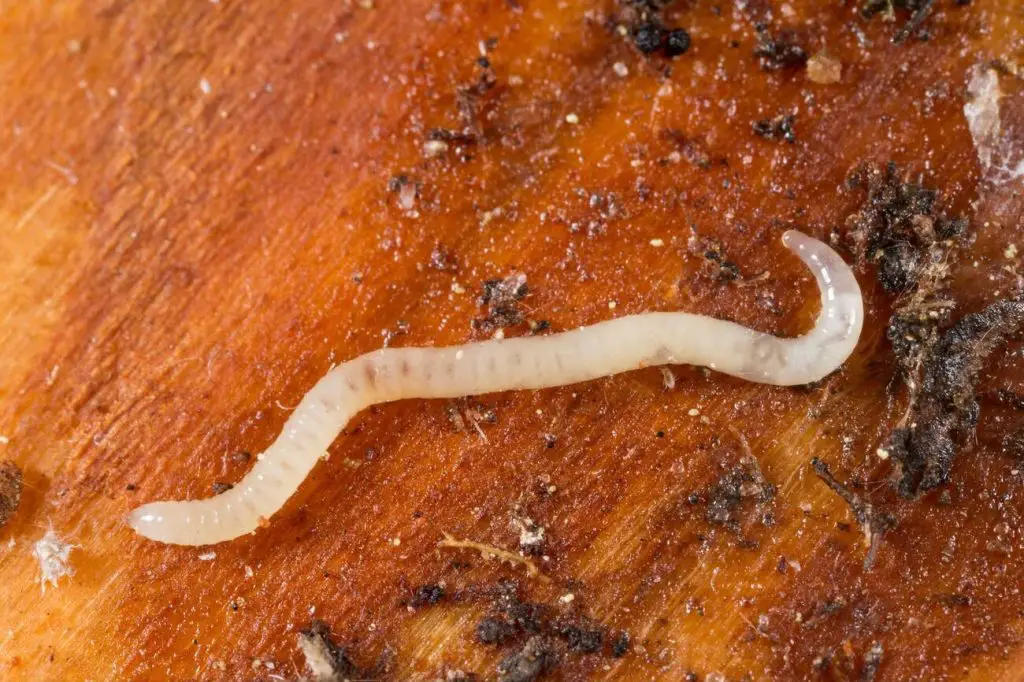
Pot worms are scientifically known as Enchytraeidae; they get their pet name from their frequent appearance in potted plants. They are small, white, or translucent critters, commonly ranging from 1-30 mm in size.
They are considered neutral worms for plants, as they can’t help them directly. However, pinworms tend to feed on pathogenic bacteria, and fungi which help to maintain the microbial soil balance and, in return, help plants grow. However, the huge population of pot worms can also cause plant growth retardation.
Identification
Pot worms are easy to recognize as translucent or white worms. They have a slender and small body and are typically found in the potted plants. They range in size from 1 to 30 mm. Pot worms move within the existing soil channels.
3. Compost worm:
We also do not find compost worm in our garden soil, let alone in potted plant soil. They are very fond of different protozoa, bacteria, and fungi. They do rot those and release nutrition.
Is there any chance of getting these tiny worms in potted plants?
Well, these tiny worms in potted plants can be found only if we use the raw compost matter to fertilize our pot soil. But like the above-mentioned worms, these tiny worms do not harm our lovely little plants.
Which worms are best for composting?
The best types of worms for vermicomposting are red wigglers (Eisenia fetida) and red worms (Lumbricus rubellus). These two species make great worms for the compost bin because they prefer a compost environment to plain soil, and they are very easy to keep. Red wiggler worms in potted plants are not dangerous for a little while.
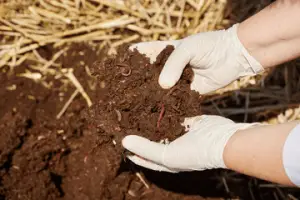
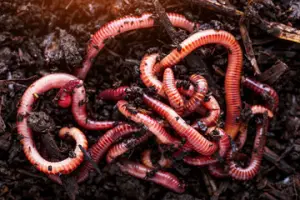
How long do compost worms live?
Worms can live for about one year in the worm bin. If a worm dies in your bin, you
probably will not notice it. Since the worm’s body is about 90% water, it will shrivel up
and become part of the compost rather quickly. New worms are born, and others die all
the time.
How long can red wiggler or compost worms in potted plants go without food?
Red wiggler worms in potted plants generally can be left unattended for about two weeks or less. You’ll see them dying around the third week. The red wiggler worms might seek to escape their bin if they are left without a food source for a long time. Still, the red wiggler worms won’t harm your potted plants.
Why red wiggler worms die?
Moisture is a must for worms to survive, but too much moisture is as harmful as too little. Excessive or too short air circulation is a very common cause of red wiggler worms dying in potted plants. Even if your plant pots come with plenty of readymade air holes in them, still the holes could become plugged or blocked, causing oxygen starvation.
How fast do red wiggler worms multiply in potted plants?
The breeding cycle of the red wiggler worms is about 27 days from mating to laying eggs. Red wiggler worms can double their population every two months.
At what temperature do red wiggler worms die?
Red wiggler or, compost worms survives in temperatures between 55° and 75° Fahrenheit (12° to 24° Celsius). Eventually, they will slow down their reproduction speed and feeding demand in extreme heat or extreme cold.
4. Leaf miners
Do the leaf miners harm potted plants?
Yes. This can be confirmed that leaf miners or white worms do harm our potted plants.
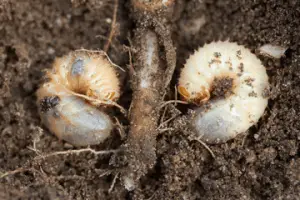
These white-colored worm gets birth inside the plant, starts eating and living inside it. Finally gets outside when adult and the veins of the leaves become vigorously visible. They will leave yellow, curvy lines in their wake. Destroying leave blades, these miners reproduce off-spring in more number.
What do they look like?
In the larva stage, they look like white worms on potted plants. Adult leaf miners or white worms look like small black flies.
How can I get rid of white worms?
Leaf miners or white worms are the very small larva of some insects that live inside the leaf, so they are difficult to control with insecticides. Removing them physically is the best solution.
However, they can be controlled with insecticides in case of broad infection. A systemic insecticide such as acephate is good enough to kill the white worm larva. Carbaryl, neem, or pyrethrin is also effective if sprayed on the larva stage of the white worm.
5. Cutworms:
These are the larva of insects that usually dwell in darkness. They do not come out at daylight; in the night, they get out for food and attack on leaves for that. Cutworms are also responsible for destroying the stem of the newly potted plants.
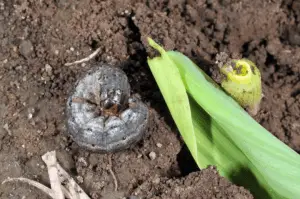
Cutworms are stout, soft-bodied, gray, or dull brown caterpillars or millipedes (1-2-inch-long) that curl up when it is at rest or disturbed or in danger. Adults are dark gray or brown in color.
Most species remain hibernated in the winter under soil or under garden waste as young larvae. In the spring, when the temperature becomes warm, they become active and begin feeding on plants at night.
There are different varieties of the worm: Black cutworm, Bronze cutworm, Dingy cutworm (green in color), Glassy cutworm (pale green in color), Variegated cutworm, etc.
What does cutworm or millepede damage look like?
Some are black, brown, grey, or tan, while others can be pink or green. Some have spots, other stripes, and even soil hues.
How do you know if you have cutworms or millipedes?
There are several species of this worm, but one of their common characteristics is that they curl up when they’re disturbed or in danger.
What is a cutworm or millipede collar?
The most popular and effective way to protect plants from these cutworms is to use a special collar. It’s a two to three-inch rounds that are pressed one inch into the soil around potted plants. Collars can be made of cardboard, metal cans, or plastic drink cups, etc. and cut into rounds. Slit one side to make them easy to pop around potted plants.
How do I kill cutworms or millipedes?
Battling these worms is like fighting a hidden opponent. These sneaky little cutworms ravage your potted plants by night but are hidden during the day. You can fight these insidious millipedes by sprinkling ‘Sevin dust’ in your potted plants. Bifen IT, Bifen LP, Cyonara Lawn, and Garden Insect Control, or Imidacloprid, can also be used to control cutworms in potted plants.
Potted Plants:
These types of potted plants are also known as house plants. They are rather grown in a controlled environment, like- containers or pots, than growing open inland of a garden. These types of plants require extra care. They need a perfect blend of moisture or humidity, light source, soil quality, temperature, and adequate fertilizers.
Some the very common potted plants are- Aloe, Anthurium, Asparagus, Peace Lily, Peperomia, Snake Plant, Cast-iron Plant, Christmas Cactus, Dieffenbachia, Chinese Evergreen, Dracaena, English Ivy, Citrus, Hoya, Parlor Palm, Philodendron, Spider Plant, Tradescantia, Plectranthus, Arrowhead Vine and many more.
Getting rid of worms in potted plants:
Let’s look back and learn the role of different types of worms. Almost all the types of worms are good in nature and can be put to good use of them in garden soil as well as potted plants.
For potted plants, it’s not healthy to keep the types of worms in a limited area for long and let them cause disturbance to the plants.
And of course, it is not wise to put worms in the soil of the potted plants since worms require a good source of nutrition and a suitable environment for their survival.
In case the shortage of proper nutrition in potted plant soil, for survival, worms might look for the source of nutrition in the roots of the plants, which might end in decaying the health of the plants.
How to get rid of worms in potted plants?
- At the very beginning, we must observe the health status of the potted plants. If a suspicious outlook grows in the meantime, we must move the potted plant aside from the healthy potted plants for further investigation.
- We need to check the soil of the potted plants to ensure what types of worms are causing the trouble, or any other reason is behind it. Ensuring the reason we must take the next steps.
- In case, ensured of an earthworm, red wiggler, cutworm, or grub worm disturbance, we can keep the infected or disturbed potted plant away in an isolated quarantine room or in any other separated place so that the types of worms can get away from the plant naturally.
- To accelerate the process, with proper measure, we can remove the types of worms found in the soil of the pot or on the plant. Worms do reveal themselves on the soil surface at a gloomy or cloudy day more easily rather than a sunny one.
- After collecting the types of worms that were stuck at our potted plant soil, we can release them into our garden or field or in an open field so that they can find their natural home. We already know that most of the common types of worms are good for keeping the soil well qualified.
- Harmful types of worms like leaf miners or cutworms or millipedes are not meant to be treated like the common types of earthworms.
- They must be killed or destroyed, to do so, we can use bleached water or soapy water. Submerging these types of worms in bleached water or soapy water will kill them easily, and that won’t require any other artificial pesticide.
- For furthermore security, we can submerge the root-soil of the potted plant in cold water, which will make the types of earthworms get out quicker. We need to pull out the potted plant just after the immediate saturation.
- The same steps can be taken with a bleached-water or insecticide killer soapy water to remove or kill the grub worms, cutworms, or leaf miners. Spraying this water on the leaves will help in killing the larva that is living under the leaf surface of the plant.
- We can change the soil, repot the infected potted plant into a healthier environment at the end.
- Keeping the potted plant surrounding cleaner will help to remove threats of the different types of worms or leaf-miners or millipedes getting back again.
Bottom Line
Plant lovers want to grow their lovely plants in their lawns, which gives them an eye-soothing view, lovely fragrance. They believe it clears their mind, opens their inner view. Planting new seedlings or seeds, watching them grow is really a beautiful feeling.
Gardening is considered an art because of the harmonious arrangement of plants in the surrounding, and it requires an art-loving mind.
I hope that you have already found what you were looking for. In short, commonly found different types of worms are actually potted plant-friendly or, in most cases, non-harming for the potted plants. In case you find your loving plants harmed or disturbed by any earthworm, red wiggler, cutworm, grubworm, or millipedes or nematodes, you still can eradicate the cause easily.








